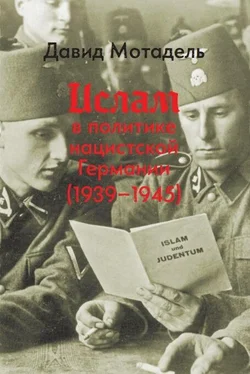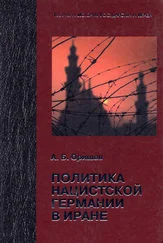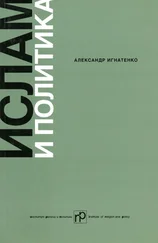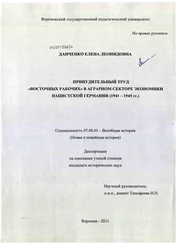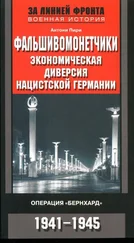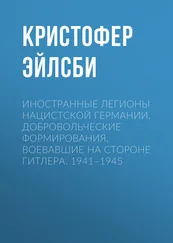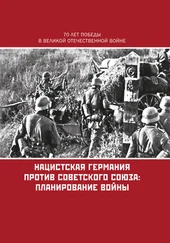Цит. по: Johnson, A Mosque in Munich , 128.
Donald N.Wilber, Adventures in the Middle East: Excursions and Incursions (Princeton, NJ, 1986), 195.
Bernard Lewis, «Communism and Islam», International Affairs 30, 1 (1954), 1–12, 12; Nachdruck in Walter Z. Laqueur (ed.), The Middle East in Transition (New York, 1958), 311–24, 324.
Citino, From Arab Nationalism to OPEC , 96.
Dreyfuss, Devil’s Game , 86.
Miles Copeland, The Game of Nations: The Amorality of Power Politics (London, 1969), 156.
Цит. по: Meining, Eine Moschee in Deutschland , 182.
О политике США в отношении Пакистана во время холодной войны см.: Robert J. McMahon, The Cold War on the Periphery: The United States, India, and Pakistan (New York, 1994); а также изложение основных идей в: Robert J. McMahon, «United States Cold War Strategy in South Asia: Making a Military Commitment to Pakistan, 1947–1954», Journal of American History 75, 3 (1988), 812–40. О роли ислама в частности см.: Andrew Rotter, «Christians, Muslims, and Hindus: Religion and U.S.-South Asian Relations, 1947–1954», Diplomatic History 24, 4 (2000), 593–613, а также: Andrew J. Rotter, Comrades at Odds: The United States and India, 1947–1964 (Ithaca, NY, 2000), 220–48; классическое исследование по теме также: Harold R. Isaacs, Scratches on Our Minds: American Views of China and India (New York, 1980 [1958]), 274–9; см. также обсуждение книги: Andrew J. Rotter, «In Retrospect: Harold A. Isaac’s Scratches on Our Minds», Reviews in American History 24 (1996), 177–88 und v. a. 187–8.
Цит. по: Rotter, «Christians, Muslims, and Hindus», 608.
Цит. по: Rotter, «Christians, Muslims, and Hindus», 611–2.
О политике США в отношении Саудовской Аравии во время холодной войны см.: Jacobs, «The Perils and Promises of Islam»; а также Jacobs, Imagining the Middle East, 55–94.
Dwight D.Eisenhower, The White House Years , 2 Vols. (London, 1963–1966), vol. 2 ( Waging Peace 1956–1961 ), 115–6.
Цит. по: Dreyfuss, Devil’s Game , 88–9.
Цит. по: Dreyfuss, Devil’s Game , 142–3.
Meining, Eine Moschee in Deutschland , 75.
Steve Coll, The Bin Ladens: The Story of a Family and its Fortune (London, 2008), 53–7 и 80–92.
О политике США в афганской войне см.: Olivier Roy, Islam and Resistance in Afghanistan (Cambridge, 1986); John K. Cooley, Unholy Wars: Afghanistan, America and International Terrorism (London, 1999); George Crile, Charlie Wilson’s War (New York, 2003); A.Z.Hilali, US-Pakistan Relationship: Soviet Invasion of Afghanistan (Burlington, VT, 2005); и Coll, Ghost Wars . Хороший обзор с позиции СССР изложен в: Rodric Braithwaite, Afgantsy: The Russians in Afghanistan 1979–89 (London, 2011). Об афганской войне как колыбели Аль-Каиды см.: R. Kim Cragin, «Early History of Al-Qa’ida», Historical Journal 51, 4 (2008), 1047–1067. О расцвете Талибана как следствии афганской войны см.: Ahmed Rashid, Taliban, Militant Islam, Oil and Fundamentalism in Central Asia (New Haven, CT, 2000).
Meining, Eine Moschee in Deutschland , 191–2. Данные были частично опубликованы в: Alex Alexiev, Soviet Nationalities in German Wartime Strategy, 1941–1945 , Rand Report (Santa Monica, CA, 1982).
Fawaz A. Gerges, America and Political Islam: Clash of Cultures of Clash of Interests? (Cambridge, 1999), 68 и 71.
Robert M.Gates, From the Shadows: The Ultimate Insider’s Story of Five Presidents and how they won the Cold War (New York, 1996), 132.
Цит. по: Patrick Vaughan, «Zbigniew Brzezinski and Afghanistan», in: Anna Kasten Nelson (ed.), The Policy Makers: Shaping American Foreign Policy from 1947 to the Present (Lanham, MD, 2009), 107–130, 109–110.
Odd Arne Westad, The Global Cold War: Third World Interventions and the Making of Our Times (Cambridge 2005), 333.
Аноним («rum»), «Guerillaführer bei Baden-Württembergs Ministerpräsident Späth – Afghanen: Westen darf uns nicht vergessen», Sonntag Aktuell (8 февраля 1981 г.).
О событиях в советских республиках Центральной Азии см.: Coll, Ghost Wars , 104–6.
Zbigniew Brzezinski, Power and Principle: Memoirs of the National Security Adviser 1977–1981 (London, 1983), 489.
Rashid, Taliban, Militant Islam, Oil and Fundamentalism in Central Asia , 130.
Об этих курсах см.: Cooley, Unholy Wars , 85.
Подробнее об Al-Jihad см.: Cragin, Early History of Al-Qa’ida , 1052.
О советской политике в отношении ислама во время холодной войны см.: Ro’i, Islam in the Soviet Union, и Yemelianova, Russia and Islam . Bennigsen и Lemercier-Quelquejay, Islam in the Soviet Union; Michael Rywkin, Moscow’s Muslim Challenge: Soviet Central Asia (London, 1982); Karen Dawisha и Hélène Carrère d’Encausse, «Islam in the Foreign Policy of the Soviet Union: A Double-Edged Sword?», в: Adeed Dawisha (ed.), Islam in Foreign Policy (Cambridge, 1983), 160–177; Alexandre Bennigsen и Marie Broxup, The Islamic Threat to the Soviet State (London, 1983); а также работы, опубликованные в: Alexandre Bennigsen et al. (Hrsg.), Soviet Strategy and Islam (London, 1989); и Timothy Nunan, «Getting Reacquainted with the „Muslims of the USSR“: Staging Soviet Islam in Turkey and Iran, 1978–1982», Ab Imperio 4 (2011), 133–71. О ее развитии после холодной войны см.: Ahmed Rashid, Jihad: The Rise of Militant Islam in Central Asia (New Haven, CT, 2002); и Adeeb Khalid, Islam after Communism: Religion and Politics in Central Asia (Berkeley, CA, 2007).
Vincent Javert, «Les Révélations d’un Ancien Conseilleur de Carter: „Oui, la CIA est Entrée en Afghanistan avant les Russes…“», Le Nouvel Observateur (15–21 января 1998), 76.
Читать дальше
Конец ознакомительного отрывка
Купить книгу
